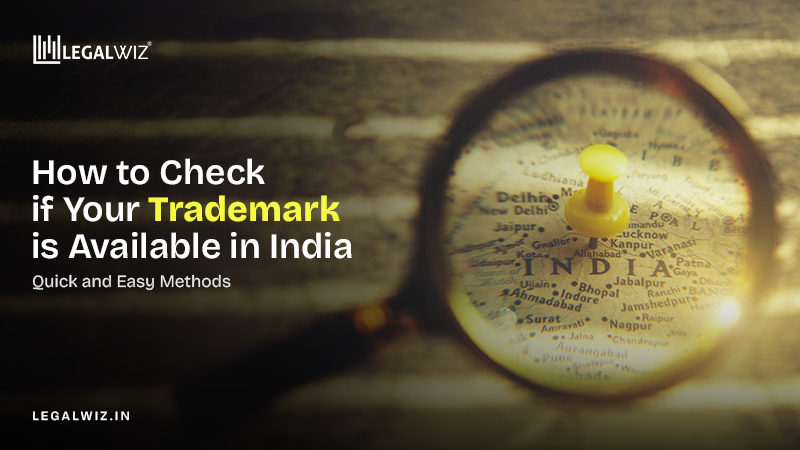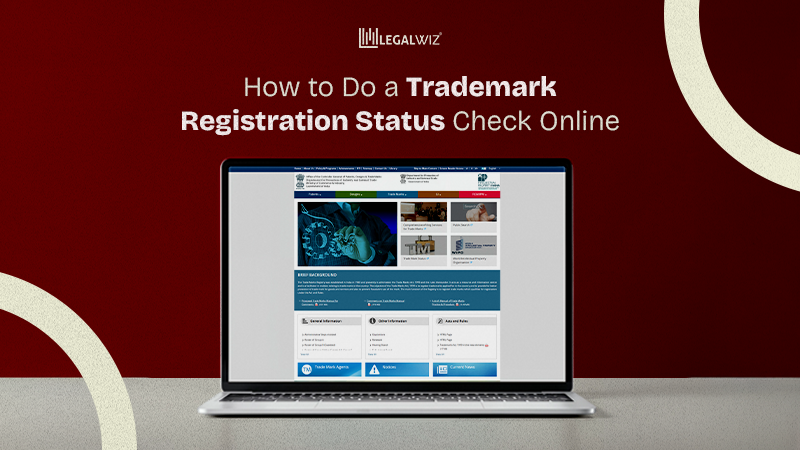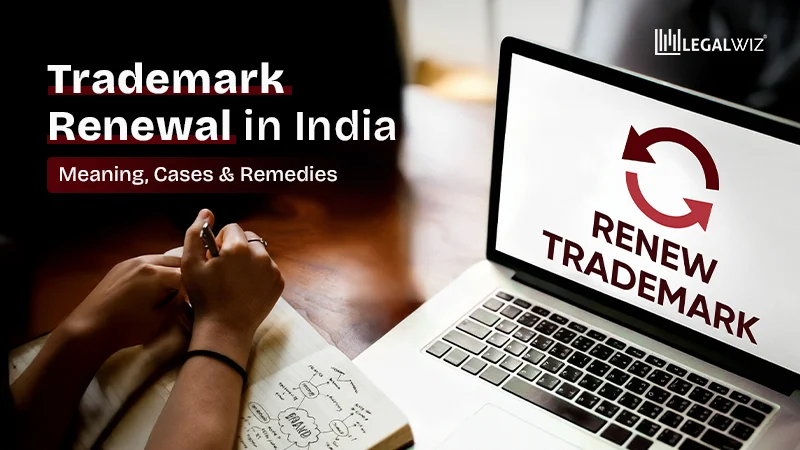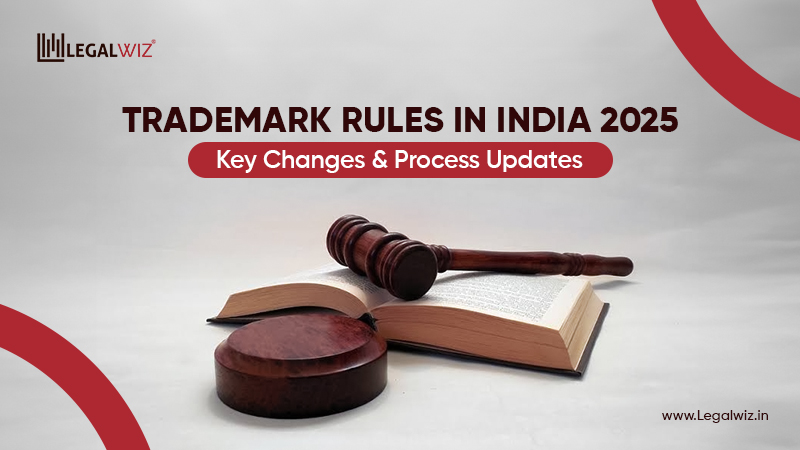Types of Trademarks in India: Meaning & Examples [2025 Guide]
Picture this: you’ve built the perfect brand—snazzy logo, catchy name, maybe even a jingle that sticks in people’s heads. Then someone strolls in and decides to ride your wave. Nightmare, right? That’s where trademarks save the day. Simply put, a trademark is a unique sign, logo, or word that says, “This is mine, hands off!”
Here’s the fun part: trademark registration isn’t just paperwork. It’s your brand’s official bodyguard. It keeps copycats at bay, shields you from legal headaches, and instantly tells customers and partners, “Yep, we’re legit.”
In India’s buzzing 2025 market, getting a trademark registered isn’t optional—it’s a survival kit for your brand. So, before anyone else tries to swipe your genius, get that trademark registration done and give your brand the protection it deserves.
1. What is a Trademark?
A trademark is a name, logo, or symbol that sets your brand apart from others. It’s what makes your product or service different from the others. But you should know the costs and fees before registering your trademark. You don’t want surprise charges creeping up!
Knowing how much something costs ahead of time could help you get ready and keep your pocketbook happy. So, find out how the trademark procedure works. It’s not only about safeguarding your brand; it’s also about making smart money choices.
2. Types of Trademarks in India
You have to understand that the years that trademarks are a lot like wardrobe choices for your brand, you’ve got options, and each one says something different. A plain word mark is like your go-to white shirt: simple, effective, and always works. A logo? That’s your statement jacket, bold, eye-catching, unforgettable.
And when you mix both, you’re basically dressed to impress. The fun part is figuring out which one matches your brand’s personality (and budget). So, let’s break down the types of trademarks in India, with examples and quick tips, before you decide what fits your brand best.
Also read: Digital Signatures for Trademark Registration
1. Word Marks – Brand Names in Text
This is your brand saying, “Hi, I’m me, remember my name.” Word marks protect the name itself, no matter how you dress it up in fonts or colors. They’re the plain white tee of trademarks—simple, classic, and always in fashion.
Examples:
- Amul – India’s dairy darling.
- Tata – The surname that builds cars, salt, and trust.
- Frooti – Because a Quicky spelling beats “Mango Drink” any day.
Quick Tip: Invented words or fun spellings = harder to copy, easier to own.
2. Logo/Device Marks – Visual Symbols or Designs
Sometimes words take the day off and let pictures do the talking. Logos are like your brand’s selfie—instantly recognizable, even if you never say a word.
Examples:
- Apple logo – A bitten apple that’s the world’s most expensive fruit.
- Nike swoosh – A tick mark that’s running laps around the globe.
- Airtel curve – That red swirl that once ruled everyone’s caller tune.
Quick Tip: A logo’s cool, but pair it with your name for double strength—like wearing sunglasses and sunscreen.
Want to know more about logo registration? Check out our blog to learn everything about trademarking logos in India and make sure your brand’s face stays one-of-a-kind.
3. Composite Marks – Words + Logo Combo
Why choose between brains and beauty when you can have both? Composite marks are the ultimate tag-team—your brand name dancing with your logo for full impact.
Examples:
- Coca-Cola logo – A fizzy name in swirly red letters.
- McDonald’s golden arches with text – Because fries taste better under a big yellow M.
- Domino’s Pizza – A name plus a box with dots that makes you hungry.
Quick Tip: File them as one unit. Breaking them up is like splitting up Ross and Rachel—why ruin the chemistry?
4. Service Marks – For Services, Not Products
If you’re in the business of experiences instead of things, this one’s your jam. Service marks are for folks who deliver, stream, or drive—not sell soap or soda.
Examples:
- Swiggy – The orange knight who saves you from cooking.
- Amazon Prime – The weekend’s most loyal binge buddy.
- Ola – A cab that shows up when the universe (and traffic) conspires against you.
Quick Tip: Don’t just trademark the name—make your promise part of the brand. That’s what sticks.
5. Certification Marks – The Seal of Trust
Certification marks aren’t about bragging. They’re about proving your stuff is legit. They’re the “trust badges” that reassure buyers you’re not selling snake oil.
Examples:
- ISI mark – Your fan won’t burst into flames.
- FSSAI logo – That little tick that lets you bite with confidence.
- AGMARK – The farmer-approved stamp for grains and produce.
Quick Tip: You can’t create one for yourself; you earn it. Like a gold star from the teacher, but grown-up.
6. Collective Marks – Shared by Groups
Collective marks are all about community vibes. Think of them as the gang’s logo—used by associations, co-ops, or groups of professionals.
Examples:
- CA Institute (ICAI) logo – Every chartered accountant’s proud badge.
- Co-op society logos – Farmers and artisans under one logo umbrella.
- Trade guild symbols – Proof that medieval group projects are still alive.
Quick Tip: Membership comes with rules. If you don’t play fair, you don’t get to wear the jersey.
7. Specialty Marks – Extra Flavour
For brands that like to stand out in unusual ways. Specialty marks cover colors, sounds, or shapes—stuff so iconic that people know you without reading a word.
Examples:
- Cadbury purple – A shade that tastes like chocolate, somehow.
- Netflix “ta-dum” – The two-second sound that cancels all your plans.
- Coca-Cola bottle – A silhouette curvier than most runway models.
Quick Tip: These marks are tough to lock down, but once you do, they’re unbeatable. It’s like trademarking your brand’s aura.
Think of trademarks as your brand’s superhero squad—words, logos, combos, and specialty marks all teaming up to protect your identity. Pick the right ones, and your brand won’t just be recognized—it’ll be remembered. In a sea of copycats, a good trademark is the cape that makes your brand fly.
Know more: Trademark Registration for Slogans/Taglines
3. Practical Tips for Choosing a Trademark Type
Choosing a trademark isn’t just slapping your name on a logo—it’s about strategy, protection, and a bit of creativity.
- Product vs Service: First, figure out what you’re guarding. If you sell chocolates, clothes, or gadgets, you’re in the product lane. Deliver food, run a subscription, or offer consulting? That’s service territory. Picking the right type ensures your trademark actually covers what you do.
- Word + Logo Combo: Whenever possible, lock both together. A word mark alone can be copied visually, and a logo alone may be hard to defend in court. Together, they create a fortress around your brand identity—like Batman with his utility belt.
- Avoid Generic or Already Registered Marks: Generic names like “Fresh Juice” or “Quick Delivery” won’t fly. And anything someone else has already registered? Forget it. Your brand deserves originality that sticks and stands out in the market.
- Check Trademark Classes Carefully: India divides trademarks into classes based on products or services. Pick the wrong class, and your trademark protection could cover the wrong thing—or worse, nothing at all. Think of it like choosing the right lane on a busy highway: the wrong one and you’re off track.
| There are 45 trademark classes, each covering a different set of goods or services. You can register your trademark in one, a few, or all relevant classes to keep copycats at bay. Feeling lost? Don’t sweat it. Use our Trademark Class Search Tool to help you find the right class in a snap—protect your brand without the headache. |
Thus, pick wisely, combine smartly, and avoid the copycats—because a well-chosen trademark is your brand’s secret superpower in the marketplace.
4. Common Mistakes to Avoid While Registering Your Trademark
Even superheroes trip sometimes—and trademarks are no different. Watch out for these classic blunders:
| Mistakes | What It Means | Why It’s a Problem |
| Copying existing trademarks | Using a name or logo someone else owns | Can lead to legal trouble and hurt your brand |
| Ignoring the correct trademark class | Filing in the wrong product/service category | Trademark may not cover what you actually sell |
| Forgetting renewal dates | Missing deadlines to maintain your trademark | Your trademark can lapse and lose protection |
| Overcomplicating registrations | Registering unnecessary mark types | Wastes time, money, and effort |
And one of the mistakes to avoid is having the right documents with you; thus, keep notes of all the documents required for Trademark Registration in India.
Thus, keep it simple, smart, and timely. Your trademark should guard your brand, not give you headaches.
5. Quick Trademark Registration Overview
Registering a trademark is easier than it sounds. Here’s the step-by-step:
- Search: Check if your name or logo is already taken. Avoid copycats from the start.
- Apply: Submit your application to IP India. You’re officially in the game.
- Examination: Experts review your application to make sure everything is in order.
- Publication: Your trademark is announced publicly. Others can raise objections if needed.
- Registration: Once approved, your trademark is officially yours, usually for 10 years.
Tip: Think of it like giving your brand a superhero shield—it protects you in the market.
6. Conclusion: Protect, Register, and Own Your Brand
Trademark registration isn’t just paperwork—it’s your brand’s armor. They protect your identity, your ideas, and your hard-earned reputation from copycats and troublemakers. Pick the right type, register it properly, and suddenly your brand becomes untouchable.
Treat your trademark like a superhero cape—wear it proudly, keep it in top shape, and no one will dare mess with your brand.
Secure your brand with LegalWiz. Choose the right trademark type, register it correctly, and ensure your brand stays protected, effortlessly.
Pick the right type, register it right, and make your brand officially uncopyable.
Frequently Asked Questions
What is a trademark?
A trademark is a brand identifier, name, logo, slogan, or symbol that distinguishes your goods or services from others.
Why should I register a trademark?
Registration gives legal protection, prevents copycats, and builds brand credibility in the market.
How long does trademark registration take?
Typically 12–18 months, depending on objections or delays, but protection starts once it’s officially registered.
Can I trademark any name or logo?
No. Generic, misleading, or already registered marks cannot be trademarked. Unique and distinctive marks work best.
What is a trademark class?
A trademark class categorizes goods or services. Choosing the correct class ensures your trademark protects the right products or services.
How long is a trademark valid?
A registered trademark is valid for 10 years and can be renewed indefinitely in 10-year blocks.

Sapna Mane
Sapna Mane is a skilled content writer at LegalWiz.in with years of cross-industry experience and a flair for turning legal, tax, and compliance chaos into clear, scroll-stopping content. She makes sense of India’s ever-changing rules—so you don’t have to Google everything twice.
![Types of Trademarks in India Types of Trademarks in India: Meaning & Examples [2025 Guide]](https://www.legalwiz.in/wp-content/uploads/Types-of-Trademarks-in-India.jpg)






